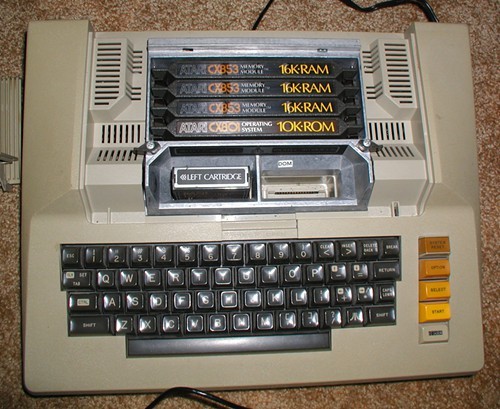
The Grizzlies made waves nationally (and locally) when they hired basketball analytics guru John Hollinger, inventor of the PER whose player stats are still prominently featured on ESPN’s NBA section, away from ESPN early in the 2012-13 season. The move wasn’t met without controversy—especially among callers to local talk radio shows—and it marked the first major move made by the Pera and Levien leadership team to shape the Grizzlies franchise into one of the league’s most forward-looking. Now that the season is entering its final phase, John was kind enough to take some of his time to answer five questions for Beyond the Arc.
1. Now that you’ve been with the Grizzlies for 14 months, what has surprised you the most about now NBA teams really operate? What’s been the hardest part of transitioning into working for a team?
John Hollinger: Probably the most interesting part was seeing how the sausage gets made with trades, because that’s what we had to dive into almost immediately when we got here given the cap situation. It was a bit different than I’d been led to believe from the journalist side in terms of how A led to B in getting a deal completed, and coming from where I did, it was also really interesting to see the rumor mill work relative to what was actually happening.
The other part that you don’t really think about is how involved the league office is an all this—there are just a lot of rules that have to be followed in getting anything done, and I’m not just talking about the salary cap. They all exist for good reasons, it’s just stuff you don’t need to consider when you’re writing about a team from the outside.
As for the hardest part, I’d say it was refocusing to a completely different universe of players. When you cover the NBA, you focus on the 450 or so players that are in the league.
When you work in the NBA, your focus shifts in both directions. On one hand, you have to track roughly 1,000 or so players that aren’t in the league but are prospects to play in it in the near future … but on another, you have to focus very, very intently on just 15 of them, the ones on your own team whose production you’re trying to maximize. It’s almost like switching to bifocals I guess—you have to zoom out and see a much bigger world of players, but also zoom in and know your own guys in far greater detail than you ever would writing about the league.
[jump]
2. How much do you miss writing your ESPN pieces? Do you see yourself writing again?
JH: I’m far too busy to miss the writing, especially since I still write some reports for internal consumption. It was a process I really enjoyed, but of course there was always that lingering nerve-wracking aspect of “What am I going to write today?” or “what original thing can I say about this random January game that ended 94-87?”
The thing I miss more is having to bottle up all my smart aleck comments that I used to share with everyone. As for writing again, never say never but I’m really enjoying what I’m doing.
3. What do you think of the city of Memphis now that you’ve been here a while? Is it what you expected it to be?
JH: I couldn’t have asked for a more welcoming city, that’s for sure. Coming from Atlanta, the big difference to me is how it feels in terms of its surroundings. Atlanta is a big generic city that happened to be air-dropped into the middle of the South, but Memphis wears its geography. The pace is a lot slower and the people much friendlier; if there’s a rat race going on here, nobody bothered to tell the rats.
I’d spent some time here covering the Grizzlies with ESPN, so I had an inkling of what to expect, but Memphis is interesting geographically because it’s neat and compact in one sense and huge and sprawling in another. I mean, I live downtown and walk to work and everyplace else (Okay, I drive when it’s too cold. Sue me). It’s all very compact and convenient, and I really like that, plus the major place I go outside downtown is the airport and that’s just 15 minutes. And yet there’s all this other stuff that’s like a half hour away for no particular reason.
Oh, one other thing—shrimp and grits. Really wasn’t aware of its existence as an entree til I got here. So that was a nice discovery.
4. The SportVU systems that have gone into every arena in the league are changing the way front offices and even fans watch games and pay attention to stats. Making some of the SportVU data public has been a really neat way for the league to let fans in on the action. Is the player tracking data changing the way the league evaluates players and performance? Is there any data that you don’t have yet that you hope future technology can provide?
JH: It’s getting there, but I think the biggest effect from the player tracking data is still several years away. Right now it’s probably more in its novelty phase, where teams are still figuring what the heck they have and how they can use it. This is the first year we have data from all 30 teams, which is a big deal because now you can compare data across teams and make some apples-to-apples analysis about where everybody stands.
As for the second part, there is *so* much data that we don’t have yet that we hope future technology can provide. Imagine if we had a small chip in the ball, for instance, and could tell all sorts of things about its velocity, spin, and direction at various moments. Cameras in the floorboards, or tracking the coaches themselves to see how they impacted live plays … the list goes on and is limited only by our imagination and where one draws the line on “useful and informative” vs. “creepy and intrusive.”
5. Some fans accused the Grizzlies front office of letting “A MACHINE” make all of the roster decisions. Now, we all know that’s true. But what kind of machine is it? A Gateway 2000? A Commodore 64?
JH: Excellent question. Just to clarify, the MACHINE is only brought in for the most crucial decisions affecting the Grizzlies. Lesser ones, such as whether to TP Stu’s office, are still left to humans in most cases.
As for the machine itself, it’s an Atari 800 with the original puke-brown keyboard, except I’ve modified it so that it runs entirely on vacuum tubes and ball bearings. Boasting an entire meg of RAM, it’s more than capable of handling the types of complex analysis we run here at Griz HQ. But mostly we use it to play Pong.
